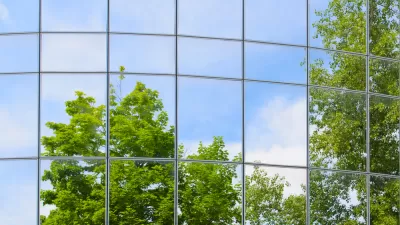The State of Connecticut will enact a new green building code in January, and builders are already calling it "awkward" and "unworkable".
The code requires all project budgeted over $5 million dollars to conform to LEED standards.
"The primary problem with the portion of the law pertaining to commercial construction, said Barry Trilling, a lawyer who heads the climate change and sustainable development practice at Wiggin & Dana in Stamford, is that it was drafted without industry input, and therefore doesn't acknowledge the intricacies of the marketplace.
For one thing, said Mr. Trilling, who also works with the National Association of Industrial and Office Properties, the statute uses a dollar threshold to determine project eligibility. It would be more meaningful, he said, to go by square footage. In southeastern Connecticut, a $5 million project may be major construction, but in affluent Fairfield County, he noted, 'that may be someone's garage.'
Nor does the law acknowledge that the LEED certification process is lengthy and may extend past the project's completion, said Nick Everett, a senior vice president at the A.P. Construction Company in Stamford, which is building a public library to LEED standards in Darien.
'If you follow the implication of that,' Mr. Everett said, 'you wouldn't be able to occupy the building until you got that certification. That's kind of goofy.'"
FULL STORY: The Green Standard

Trump Administration Could Effectively End Housing Voucher Program
Federal officials are eyeing major cuts to the Section 8 program that helps millions of low-income households pay rent.

Planetizen Federal Action Tracker
A weekly monitor of how Trump’s orders and actions are impacting planners and planning in America.

Ken Jennings Launches Transit Web Series
The Jeopardy champ wants you to ride public transit.

Rebuilding Smarter: How LA County Is Guiding Fire-Ravaged Communities Toward Resilience
Los Angeles County is leading a coordinated effort to help fire-impacted communities rebuild with resilience by providing recovery resources, promoting fire-wise design, and aligning reconstruction with broader sustainability and climate goals.

When Borders Blur: Regional Collaboration in Action
As regional challenges outgrow city boundaries, “When Borders Blur” explores how cross-jurisdictional collaboration can drive smarter, more resilient urban planning, sharing real-world lessons from thriving partnerships across North America.

Philadelphia Is Expanding its Network of Roundabouts
Roundabouts are widely shown to decrease traffic speed, reduce congestion, and improve efficiency.
Urban Design for Planners 1: Software Tools
This six-course series explores essential urban design concepts using open source software and equips planners with the tools they need to participate fully in the urban design process.
Planning for Universal Design
Learn the tools for implementing Universal Design in planning regulations.
Ada County Highway District
Clanton & Associates, Inc.
Jessamine County Fiscal Court
Institute for Housing and Urban Development Studies (IHS)
City of Grandview
Harvard GSD Executive Education
Toledo-Lucas County Plan Commissions
Salt Lake City
NYU Wagner Graduate School of Public Service



























